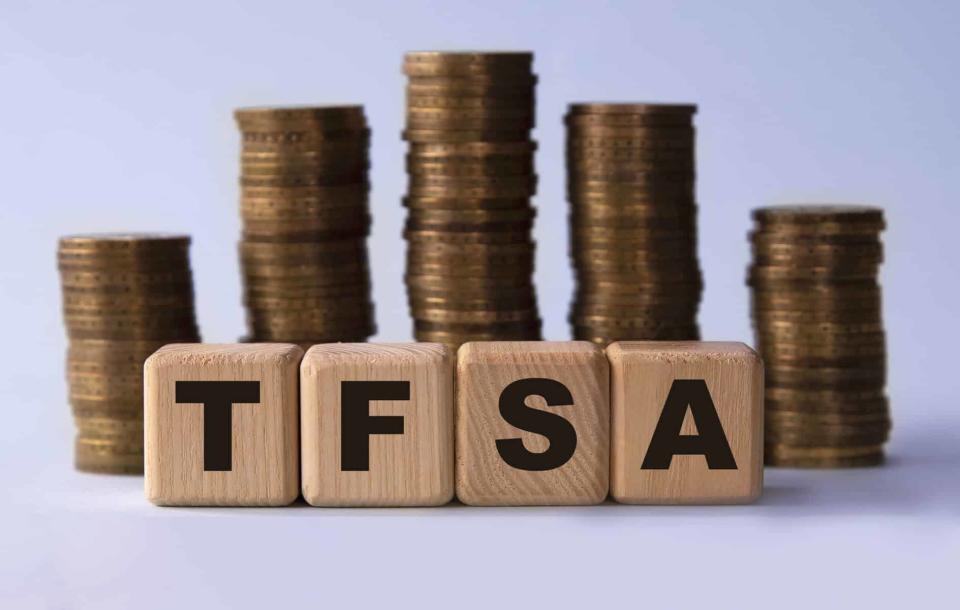Here’s the Average TFSA Balance in 2024

Written by Andrew Button at The Motley Fool Canada
What’s the average tax-free savings account (TFSA) balance in 2024? It’s a worthwhile question to ask because the answer could tell you how you’re doing with savings relative to other Canadians. The TFSA has become the default investing account in Canada, having surpassed the RRSP in annual contributions in 2013. So, your TFSA balance is something of a measure of your diligence with saving and investing. In this article, I will share my estimate of the average TFSA balance in 2024, along with some ideas about what to do with the information.
Between $26,000 and $41,510
There are two estimates of the average TFSA balance in Canada, one fairly recent, and the other a bit more outdated. The more recent estimate ($41,510) comes from Bank of Montreal (TSX:BMO), a major Canadian bank, while the older one ($26,000) comes from Statistics Canada, the country’s main statistical agency. While BMO has published newer data than Statcan has, the latter has better access to data and has fewer incentives to create “hype” about TFSAs, as it does not sell investments. Given that both estimates come from sources that have their respective strengths and weaknesses, we can, instead of declaring one specific average TFSA balance, give a range from $26,000 to $41,510.
What does this range tell us?
For one thing, it tells us that not many Canadians are maxing out their TFSAs. The average age in Canada is 41.7 years old. This means that most potential TFSA contributors have accumulated the full $95,000 in contribution room. Yet the average TFSA is between $53,490 and $69,000 behind the absolute maximum.
For another thing, the TFSA estimates tell us Canadians are contributing to their TFSAs. Although they aren’t contributing the maximum, Canadians are putting money into their TFSAs, indicating a desire to save and invest. So, we can surmise that many Canadians are taking money seriously. If this sounds like you, read on, because in the next section I’ll explore some ways you can invest your TFSA money to build wealth.
Investing in your TFSA
The TFSA is much more than just a savings vehicle. In addition to holding cash in your TFSA, you can also open a brokerage account in it and hold investments. How wisely you choose these investments may be even more important than how much you contribute in the long run.
One popular type of asset to hold in a TFSA is index funds. These provide diversification, low fees, and generally decent long-term returns. They are often recommended to beginner investors for these reasons.
Then we have guaranteed investment certificates (GICs). These provide a bit of interest income at the end of the term to maturity. Today, they yield around 5%, and they’re insured by the government. Very much worth holding.
Then we have individual stocks. These often pay dividends and have the potential for capital appreciation. Consider Bank of Montreal, a company mentioned earlier in this article. It’s a dividend stock with a 5.4% yield. It has grown its dividend by 8.4% per year over the last five years. If the company continues its dividend growth, those buying today will enjoy an even higher yield in the future.
Despite all this dividend growth, BMO has only a 49% payout ratio, meaning it pays out less than half of its profits as dividends. Finally, in addition to common stock, BMO offers bonds, preferred shares and GICs, so there are many ways to share in the bank’s revenue and earnings. It goes to show just how many ways there are to invest profitably in a TFSA.
The post Here’s the Average TFSA Balance in 2024 appeared first on The Motley Fool Canada.
Should you invest $1,000 in Bank of Montreal right now?
Before you buy stock in Bank of Montreal, consider this:
The Motley Fool Stock Advisor Canada analyst team just identified what they believe are the 10 best stocks for investors to buy now… and Bank of Montreal wasn’t one of them. The 10 stocks that made the cut could potentially produce monster returns in the coming years.
Consider MercadoLibre, which we first recommended on January 8, 2014 ... if you invested $1,000 in the “eBay of Latin America” at the time of our recommendation, you’d have $17,363.76!*
Stock Advisor Canada provides investors with an easy-to-follow blueprint for success, including guidance on building a portfolio, regular updates from analysts, and two new stock picks each month – one from Canada and one from the U.S. The Stock Advisor Canada service has outperformed the return of S&P/TSX Composite Index by 26 percentage points since 2013*.
See the 10 stocks * Returns as of 6/3/24
More reading
Can You Guess the 10 Most Popular Canadian Stocks? (If You Own Them, You Might Be Losing Out.)
How to Build a Bulletproof Monthly Passive-Income Portfolio in 2024 With Just $25,000
Fool contributor Andrew Button has no position in any of the stocks mentioned. The Motley Fool has no position in any of the stocks mentioned. The Motley Fool has a disclosure policy.
2024

 Yahoo Finance
Yahoo Finance 